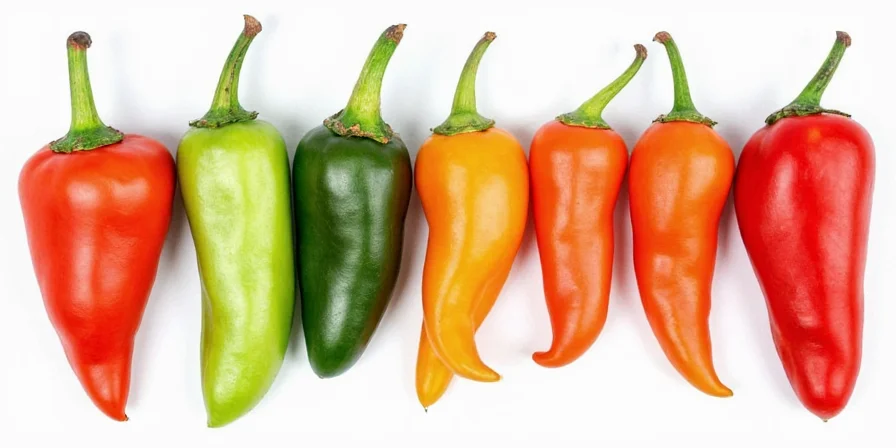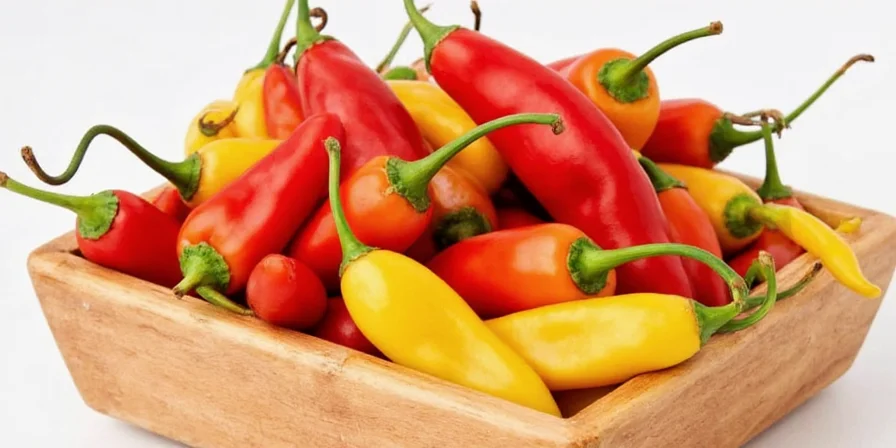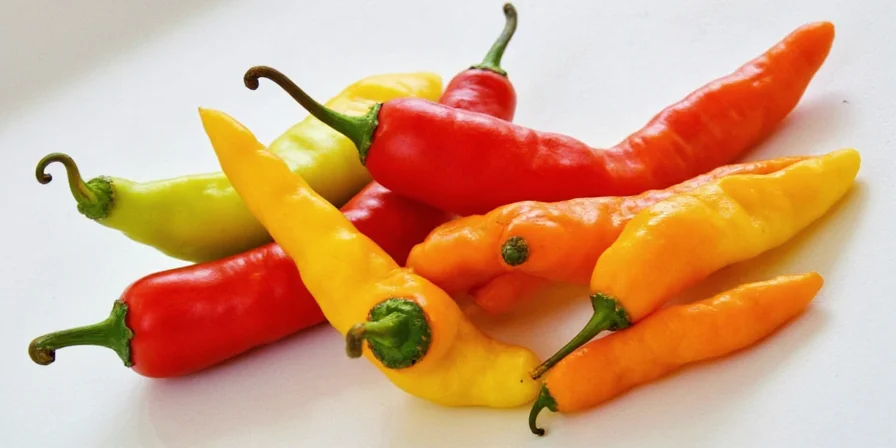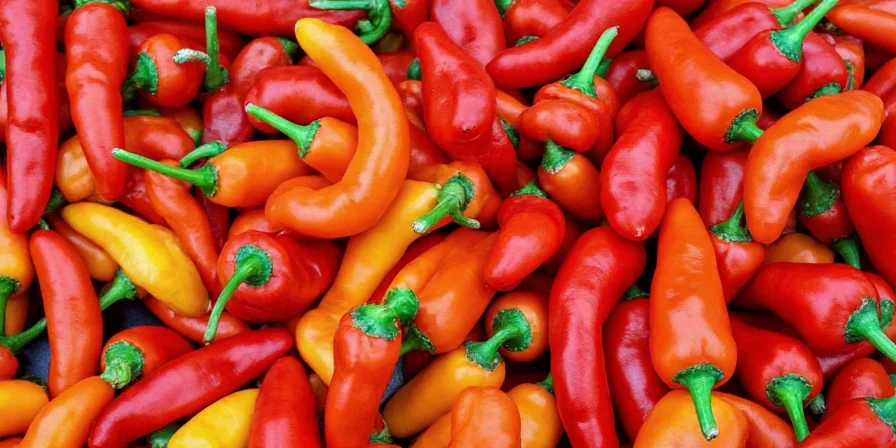Spice Up Your Life: 10 Must-Know Mexican Peppers and How to Use Them
Table of Contents
- Introduction
- The Top 10 Mexican Peppers You Should Know
- Pepper Heat Comparison Chart
- Pro Tips for Handling Mexican Peppers
- Classic Recipes Featuring Mexican Peppers
- Conclusion
Introduction: A Fiery Journey Through Mexico’s Spice Garden
Mexico isn't just a land of tacos and tequila — it's also home to one of the most diverse and flavorful pepper traditions in the world. Mexican cuisine wouldn’t be the same without its rich tapestry of chiles, each bringing its own unique blend of heat, aroma, and history.

The Top 10 Mexican Peppers You Should Know
Whether you're making mole, salsas, or street tacos, choosing the right pepper can make or break your dish. Let’s explore some of the most iconic types of Mexican peppers, from mild to wild!
1. Jalapeño – The People’s Pepper 🌶️
- Heat Level: Mild (2,500–8,000 SHU)
- Flavor Profile: Fresh, slightly grassy
- Best For: Salsas, nachos, poppers
Originating from Veracruz, jalapeños are the most widely recognized Mexican chili. Smoked jalapeños are known as chipotles — more on those later!
2. Poblano – The Creamy King of Chiles
- Heat Level: Mild to medium (1,000–2,000 SHU)
- Flavor Profile: Earthy, mildly spicy, nutty when dried
- Best For: Chiles rellenos, rajas con crema
Poblanos are the backbone of many traditional Mexican dishes. When dried, they become ancho chiles — a staple in mole sauces.
3. Serrano – The Jalapeño’s Spicier Cousin
- Heat Level: Medium (10,000–23,000 SHU)
- Flavor Profile: Bright, citrusy, punchy heat
- Best For: Salsas, hot sauces, garnishes
Serranos are often used raw in salsas. Unlike jalapeños, you can eat them whole — if you dare!
4. Chipotle – The Smoky Wonder
- Heat Level: Medium to hot (2,500–8,000 SHU)
- Flavor Profile: Smoky, earthy, with a touch of sweetness
- Best For: Adobo sauces, marinades, soups
Chipotles are smoked, dried jalapeños. They add depth and complexity to any dish — perfect for slow-cooked recipes.
5. Ancho – The Sweet and Smoky Dried Poblano
- Heat Level: Mild (1,000–2,000 SHU)
- Flavor Profile: Fruity, chocolate-like, deep smokiness
- Best For: Mole sauces, stews, braises
The dried form of the poblano pepper is essential in many regional moles. Soak them before use to soften their texture.
6. Guajillo – The Versatile Workhorse
- Heat Level: Mild (2,500–5,000 SHU)
- Flavor Profile: Tangy, berry-like, slightly sweet
- Best For: Salsas, marinades, tamales
Guajillos are one of the most commonly used dried chiles in Mexican cooking. Their thin skin makes them easy to rehydrate quickly.
7. Pasilla – The Dark Horse of Mexican Chiles
- Heat Level: Mild to medium (1,000–2,500 SHU)
- Flavor Profile: Prune-like, raisiny, smoky
- Best For: Enchilada sauces, soups, stews
Also known as chilaca when fresh, pasilla has a deep blackish-green color. It’s often used alongside ancho and guajillo in “the holy trinity” of mole ingredients.
8. Habanero – The Tropical Inferno
- Heat Level: Very hot (100,000–350,000 SHU)
- Flavor Profile: Fruity, floral, explosive heat
- Best For: Hot sauces, salsas, adventurous grilling
Hailing from the Yucatán Peninsula, habaneros pack a serious punch. Handle with gloves, and don’t rub your eyes afterward!
9. Morita – The Little Black Gem
- Heat Level: Medium to hot (15,000–30,000 SHU)
- Flavor Profile: Smoky, tangy, slightly fruity
- Best For: Salsas, adobo, tacos al pastor
Moritas are small, dark red to black smoked chipotles. They’re often sold packed in oil and bring bold flavor to any dish.
10. Cascabel – The Nutty Rattler
- Heat Level: Mild to medium (1,000–3,000 SHU)
- Flavor Profile: Nutty, woodsy, with a hint of cocoa
- Best For: Salsas, soups, mole
Cascabels are round and rattle when dry — hence their name. They add a rustic charm and subtle spice to sauces and dips.
Pepper Heat Comparison Chart
To help you choose the right level of fire for your taste buds, here’s a quick overview of all ten peppers and their Scoville Heat Units (SHU):
| Pepper Name | Scoville Heat Units (SHU) | Flavor Notes |
|---|---|---|
| Jalapeño | 2,500–8,000 | Fresh, grassy |
| Poblano/Ancho | 1,000–2,000 | Earthy, nutty |
| Serrano | 10,000–23,000 | Bright, punchy |
| Chipotle | 2,500–8,000 | Smoky, sweet |
| Guajillo | 2,500–5,000 | Tangy, berry-like |
| Pasilla | 1,000–2,500 | Prune-like, smoky |
| Habanero | 100,000–350,000 | Fruity, floral |
| Morita | 15,000–30,000 | Smoky, tangy |
| Cascabel | 1,000–3,000 | Nutty, cocoa-like |

Pro Tips for Handling Mexican Peppers
Whether you're a pro chef or a weekend warrior in the kitchen, handling peppers safely and effectively is key. Here are some expert-approved tricks:
- Use Gloves: Capsaicin — the compound that gives peppers their heat — sticks to your skin and can burn eyes and mucous membranes. Gloves are your best friend.
- Remove Seeds and Veins: Most of the heat lives in the seeds and white inner membranes. Remove them for milder flavor.
- Roast Before Using: Roasting enhances flavor and softens the flesh. Simply place under a broiler, in a skillet, or over an open flame until charred.
- Soak Dried Peppers: For dried chiles like ancho, guajillo, and pasilla, soak in hot water for 20–30 minutes to rehydrate before blending.
- Cool the Burn: If you end up with a mouth-on-fire situation, reach for dairy (like milk or yogurt), not water. Dairy helps neutralize capsaicin better than H2O ever could.

Classic Recipes Featuring Mexican Peppers
Ready to put these peppers into action? Try these crowd-pleasing recipes that highlight the flavor and versatility of Mexican chiles:
1. Smoky Tomato Salsa with Chipotle
- Ingredients: Tomatoes, onion, garlic, chipotle in adobo, cilantro, lime
- Tip: Add a splash of vinegar to balance the richness of the chipotle.
2. Creamy Poblano Rellenos
- Ingredients: Poblano peppers, cheese, egg batter, flour
- Tip: Roast and peel the poblanos before stuffing for maximum flavor.
3. Habanero Pineapple Salsa
- Ingredients: Fresh pineapple, habanero, red onion, lime, cilantro
- Tip: Balance the heat with the fruit’s natural sweetness.
4. Guajillo and Garlic Tacos Al Pastor
- Ingredients: Pork shoulder, guajillo chiles, garlic, vinegar, pineapple
- Tip: Marinate overnight for deeper flavor infusion.
5. Simple Serrano Green Sauce
- Ingredients: Serrano peppers, tomatillos, onion, garlic, cilantro
- Tip: Blend with ice-cold water for a silky, restaurant-style finish.

Conclusion: Embrace the Fire, Celebrate the Flavor
Mexican peppers are more than just heat — they’re a celebration of culture, tradition, and culinary creativity. From the mild comfort of a poblano to the tropical inferno of a habanero, each variety offers a unique story and flavor profile that can elevate your cooking to new heights.
So next time you're at the market or flipping through a recipe book, don’t shy away from the chiles section. Grab a few different types, experiment with combinations, and let your taste buds travel south of the border — one spicy bite at a time.












 浙公网安备
33010002000092号
浙公网安备
33010002000092号 浙B2-20120091-4
浙B2-20120091-4